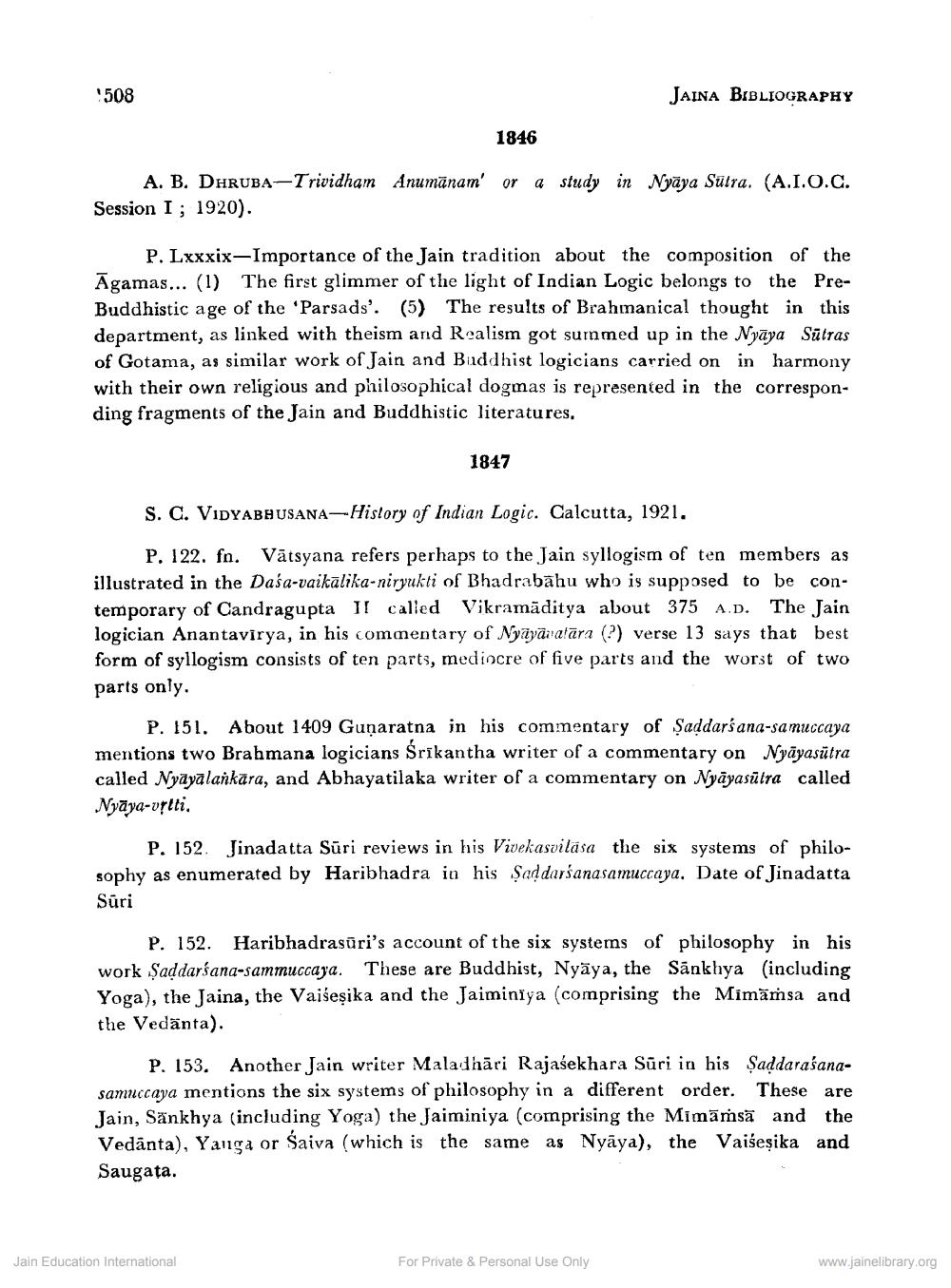________________
508
1846
A. B. DHRUBA-Trividham Anumanam' or a study in Nyaya Sutra. (A.I.O.C. Session I; 1920).
P. Lxxxix-Importance of the Jain tradition about the composition of the Āgamas... (1) The first glimmer of the light of Indian Logic belongs to the PreBuddhistic age of the 'Parsads'. (5) The results of Brahmanical thought in this department, as linked with theism and Realism got summed up in the Nyaya Sutras of Gotama, as similar work of Jain and Buddhist logicians carried on in harmony with their own religious and philosophical dogmas is represented in the corresponding fragments of the Jain and Buddhistic literatures.
JAINA BIBLIOGRAPHY
1847
S. C. VIDYABHUSANA-History of Indian Logic. Calcutta, 1921.
P. 122. fo. Vätsyana refers perhaps to the Jain syllogism of ten members as illustrated in the Dala-vaikälika-niryukti of Bhadrabahu who is supposed to be contemporary of Candragupta II called Vikramaditya about 375 A.D. The Jain logician Anantavirya, in his commentary of Nyayanatara (?) verse 13 says that best form of syllogism consists of ten parts, mediocre of five parts and the worst of two parts only.
P. 151. About 1409 Gunaratna in his commentary of Saddariana-samuccaya mentions two Brahmana logicians Śrikantha writer of a commentary on Nyayasutra called Nyayalankara, and Abhayatilaka writer of a commentary on Nyayasutra called Nyaya-vytti.
P. 152. Jinadatta Süri reviews in his Vivekasvilasa the six systems of philosophy as enumerated by Haribhadra in his Saddarianasamuccaya. Date of Jinadatta Sûri
Jain Education International
P. 152. Haribhadrasüri's account of the six systems of philosophy in his work Saddariana-sammuccaya. These are Buddhist, Nyäya, the Sankhya (including Yoga), the Jaina, the Vaišeşika and the Jaiminiya (comprising the Mimämsa and the Vedanta).
P. 153. Another Jain writer Maladhari Rajasekhara Sūri in his Saddarakanasamuccaya mentions the six systems of philosophy in a different order. These are Jain, Sankhya (including Yoga) the Jaiminiya (comprising the Mimämsä and the Vedanta), Yanga or Saiva (which is the same as Nyaya), the Vaišeṣika and Saugata.
For Private & Personal Use Only
www.jainelibrary.org




